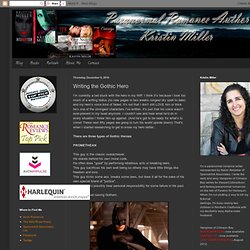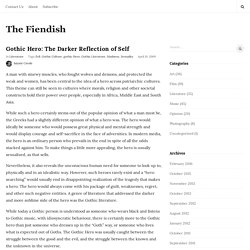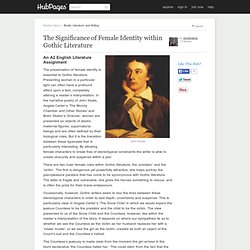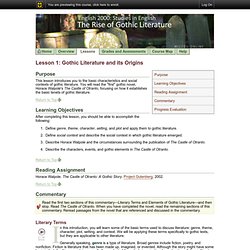

Gothic Characters Critical Voices. Kristin Miller: Writing the Gothic Hero. I'm currently a tad stuck with the hero in my WIP.

I think it's because I took too much of a writing hiatus (no new pages in two weeks--longest dry spell to date) and my hero's voice kind of faded. It's not that I don't still LOVE him or think he's one of the strongest characters I've written, it's just that his voice wasn't ever-present in my head anymore. I couldn't see and hear what he'd do in every situation I threw him up against. (And he's got to be ready for what's to come! These next fifty pages are going to turn his world upside down!) There are three types of Gothic Heroes This guy is the classic overachiever.
*Think Batman saving Gotham. *How'd this picture sneak in here? Oh, these are the dark, dark, dark bad boys.They're secretiveAristocraticIntrospective SuaveVery conflicted over something in their past andFatally attractive.They're also extremely arrogantCunningJaded andWorld weary. *Think Anne Rice's Lestat from Interview with a Vampire *See? Gothic Hero: The Darker Reflection of Self. A man with sinewy muscles, who fought wolves and demons, and protected the weak and women, has been central to the idea of a hero across patriarchic cultures.

This theme can still be seen in cultures where morals, religion and other societal constructs hold their power over people, especially in Africa, Middle East and South Asia. While such a hero certainly stems out of the popular opinion of what a man must be, the Greeks had a slightly different opinion of what a hero was. The hero would ideally be someone who would possess great physical and mental strength and would display courage and self-sacrifice in the face of adversities. In modern media, the hero is an ordinary person who prevails in the end in spite of all the odds stacked against him. To make things a little more appealing, the hero is usually sexualized, as that sells. Nevertheless, it also reveals the unconscious human need for someone to look up to, physically and in an idealistic way. Image.
The Significance of Female Identity within Gothic Literature. The presentation of female identity is essential to Gothic literature.

Presenting women in a particular light can often have a profound affect upon a text, completely altering a reader’s interpretation. In the narrative poetry of John Keats, Angela Carter’s ‘The Bloody Chamber and Other Stories’ and Bram Stoker’s ‘Dracula’, women are presented as objects of desire, maternal figures, supernatural beings and are often defined by their biological roles.
But it is the transition between these typecasts that is particularly interesting. By allowing female characters to break free of stereotypical constraints the writer is able to create obscurity and suspense within a plot. There are two main female roles within Gothic literature; the ‘predator’ and the ‘victim’. Occasionally, however, Gothic writers seem to blur the lines between these stereotypical characters in order to add depth, uncertainty and suspense. Letting ‘love’s cousin’ take hold of her, and decides to take action. Bibliography. Engl403-1.3.1-A-Glossary-of-Literary-Gothic-Terms. Lesson 1: Gothic Literature and its Origins. Purpose This lesson introduces you to the basic characteristics and social contexts of gothic literature.

You will read the "first" gothic novel, Horace Walpole's The Castle of Otranto, focusing on how it establishes the basic tenets of gothic literature. Learning Objectives After completing this lesson, you should be able to accomplish the following: Define genre, theme, character, setting, and plot and apply them to gothic literature. Reading Assignment Horace Walpole. Progress Evaluation 1 essay, 100 points.